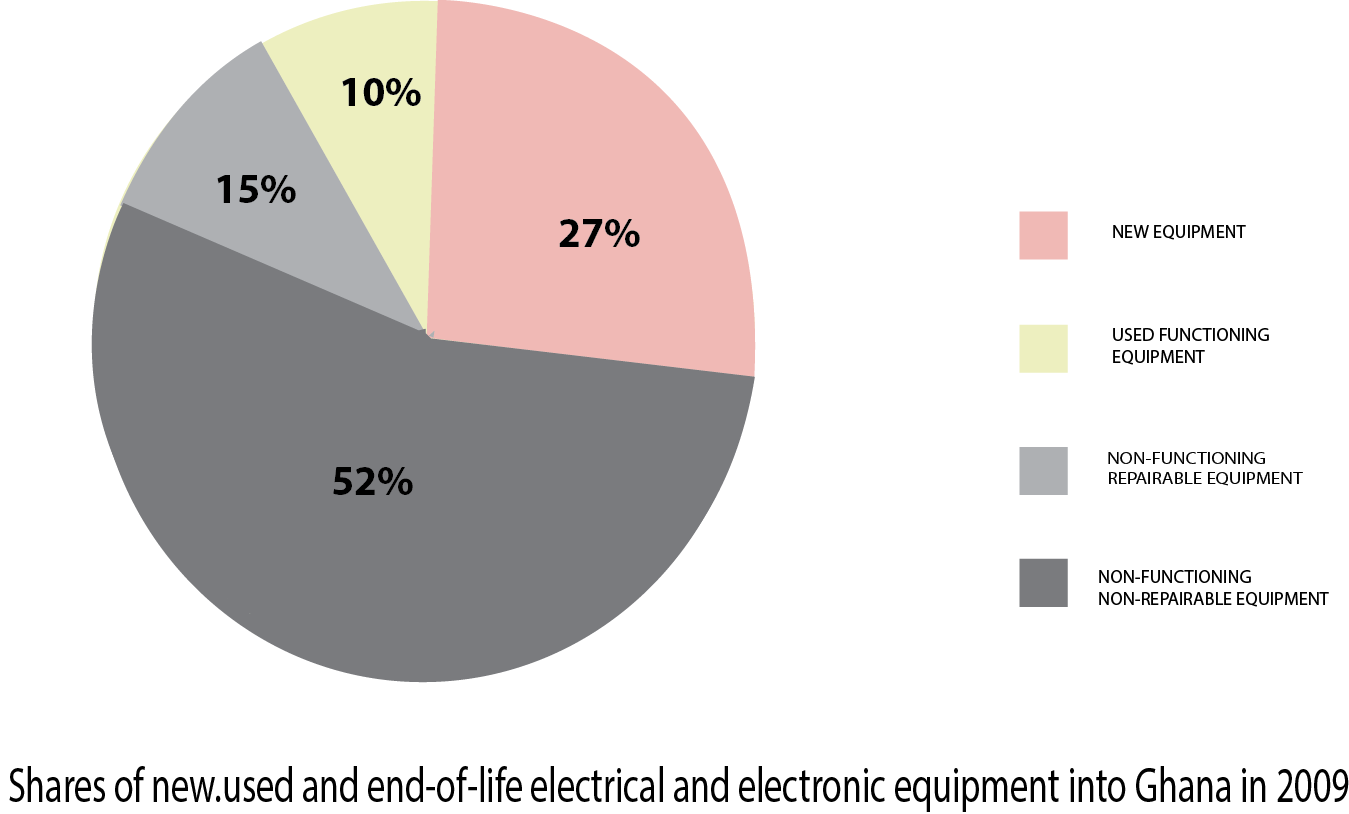Data of E-waste in Ghana




Cathode ray tubes, often found in older televisions, video cameras and computer monitors are often broken apart, the yoke removed and the shell dumped. Contents in the shell, such as lead and barium, could leach through the soil and into the ground water of local communities. This endangers not just the people who drink and bathe with this water but also the different species of wildlife that rely on the water to sustain.

An air control station installed in the Agbogbloshie dumpsite has detected iron, lead and copper. 1.5 milligrams per cubic metre of copper (the allowed threshold is 1.0 mg), 7.8mg/ m³ of iron (threshold: 5.0) and 0.72 mg/ m³ of lead (threshold: 0.15) have been found. These thresholds are meant for work areas, but Agbogbloshie is actually an entire area of Accra with about 90,000 inhabitants. (Journal of Health and Pollution, 2011)

Out of 100 soil samples collected in Agbogbloshie, more than half have shown an amount of lead which is over twice as much as the standards allowed by the United States Environmental Protection Agency (USEPA). The detected values range from a minimum of 135 ppm (parts-per-million) to a maximum of 18.125 ppm. The threshold indicated in the USEPA guidelines is of 400 ppm. (Journal of Health and Pollution, 2011)
